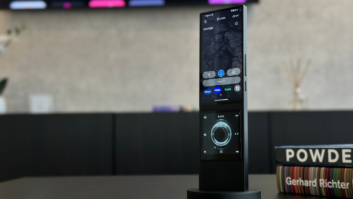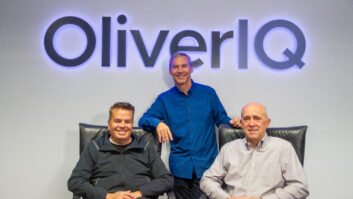Redwood Shores, Calif. — Wherify Wireless plans a September launch of the nation’s first kid-tracking GPS phone that can be tracked by any cellular phone operating on any carrier’s network. It will also be the first child-locator phone to operate on GSM networks in the United States.
The company is targeting 8- to 11-year-olds, but Wherify expects some phones to be purchased for use by the elderly.
Family locator services recently unveiled by Sprint, Verizon and MVNO Disney Mobile all operate on CDMA networks, and subscribers to those services view the location of their child’s GPS-equipped handset only from select handsets operating on the same network as the child’s phone. With Wherify’s service, a consumer can use any cellular phone operating on any cellular network as long as it’s equipped with SMS (short messaging service). Subscribers send a location request via text message and receive the address of the kid’s location as a text message. Like the other locator services, Wherify also lets subscribers use a PC’s Web browser to view maps displaying their child’s location.
The CDMA-network services also let subscribers view maps on the displays of select cellular handsets, but later on this year, Wherify plans a WAP (wireless access protocol) version of its Web site to enable any WAP-browsing phone to view its maps, said spokesman John Cunningham.
Wherify, which will operate as an MVNO (mobile virtual network operator) to market the phones and companion service through retail, will launch its Wherifone handset through an unnamed national retailer; at least three Web sites; and through three distributors: D&H, SED and Wynit. The distributors will target regional and independent CE and wireless retailers, including wireless specialty stores.
The company will support the Wherifone launch with co-op advertising dollars, targeted event marketing and likely online advertising, Cunningham said.
Wherify’s first kid-tracking device, available for three years until last year, was a CDMA-based wristband that lacked voice capability, was initially available at retail at $400, and could be tracked only through a Web-browsing PC or by placing a voice call to Wherify. The new model at $99 adds voice and ability to be tracked from other cellular phones, and it’s shaped like a small phone with parent-controlled dialing capabilities. The Wherifone offers no Web browsing, games or other entertainment features other than seven preloaded ringtones to appeal to parents who don’t want their kids pestering them to pay for downloadable content.
Service plans start at $19.95 per month with one-year contract for 60 minutes of talktime, 60 location requests or a mix of both. Additional plans are available in $5 increments. A two-year contract offers the same monthly price, but one month is free.
Wherify shifted to GSM from CDMA, Cunningham said, because GSM carriers in the United States do not offer GPS-equipped phones, nor are their networks inherently capable of offering location services with accuracy greater than 100 to 300 yards, Cunningham said. Every Sprint and Verizon CDMA phone, he added, offers Qualcomm’s assisted-GPS technology, enabling location accuracy to within feet.
For GSM networks, Wherify incorporates SiRF’s Starr III GPS chip and its own assisted-GPS server to provide faster location-acquisition times and greater accuracy, Cunningham said. The phone’s first “cold-start” fix takes a minute or less in unobstructed areas and delivers accuracy to less than 10 feet in unobstructed outdoor areas and up to 100 feet within large buildings. A second location request made within two hours of the first takes less than 10 seconds in unobstructed areas.
Wherifone also chose to migrate to GSM so it could offer a triband 850/1,800/1,900MHz model that could be tracked in other countries and to tap into international sales with a triband 900/1,800/1,900MHz phone.
The handset lacks dialing keypad but features three parent-programmable speed dials, an emergency 911 key and a 20-person contact list that’s also parent-programmable. Programming is accomplished remotely through Wherify’s Web site or through SMS messages to the handset. Consumers can also call Wherify to program numbers remotely.













